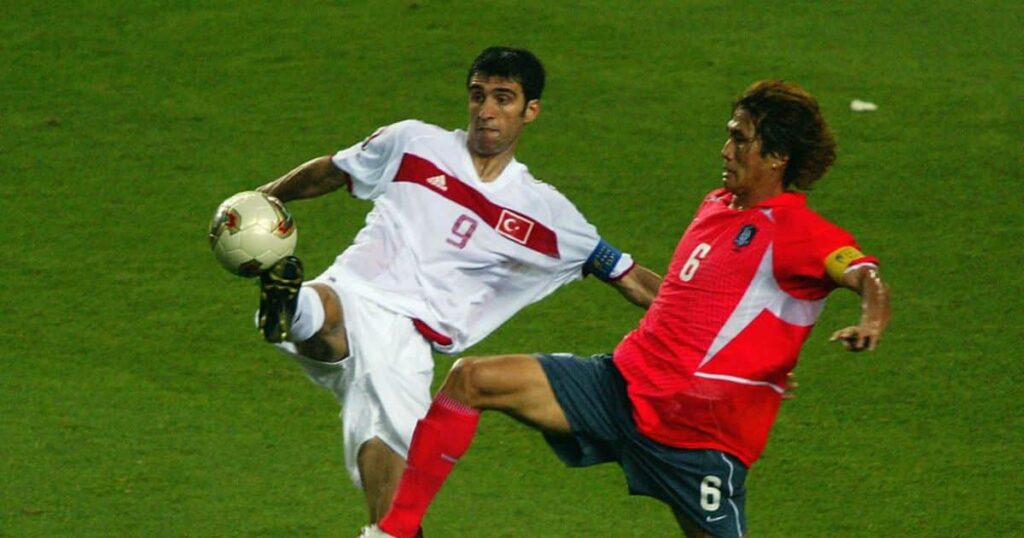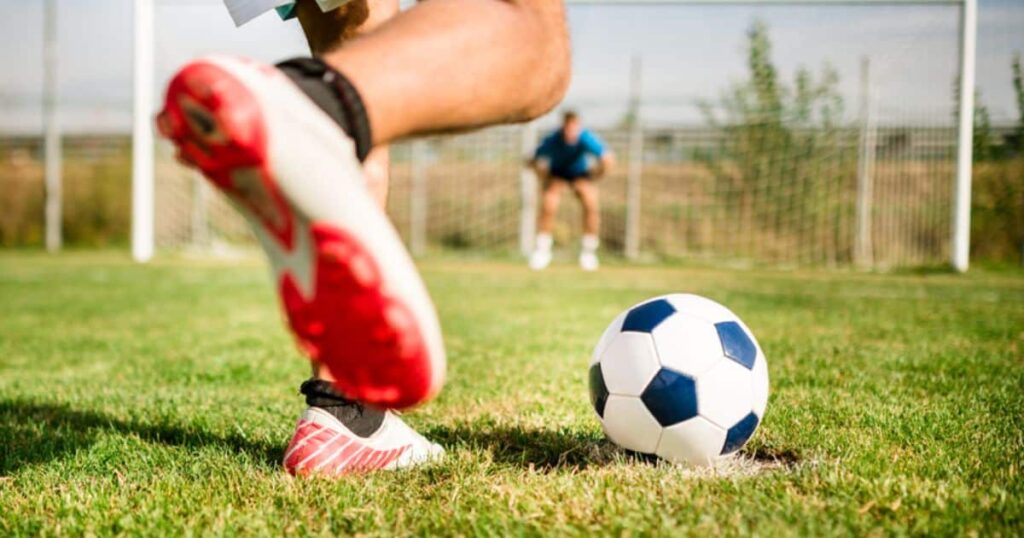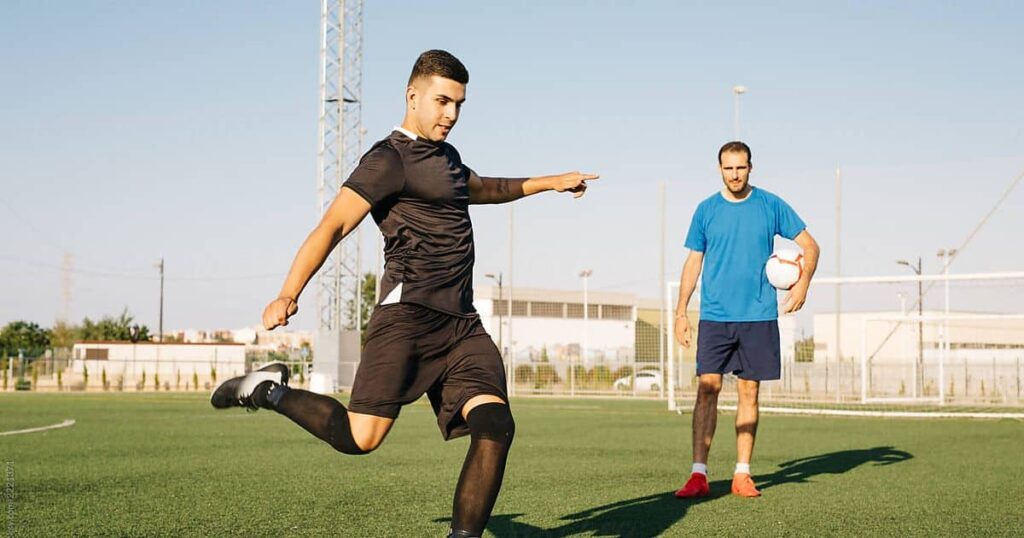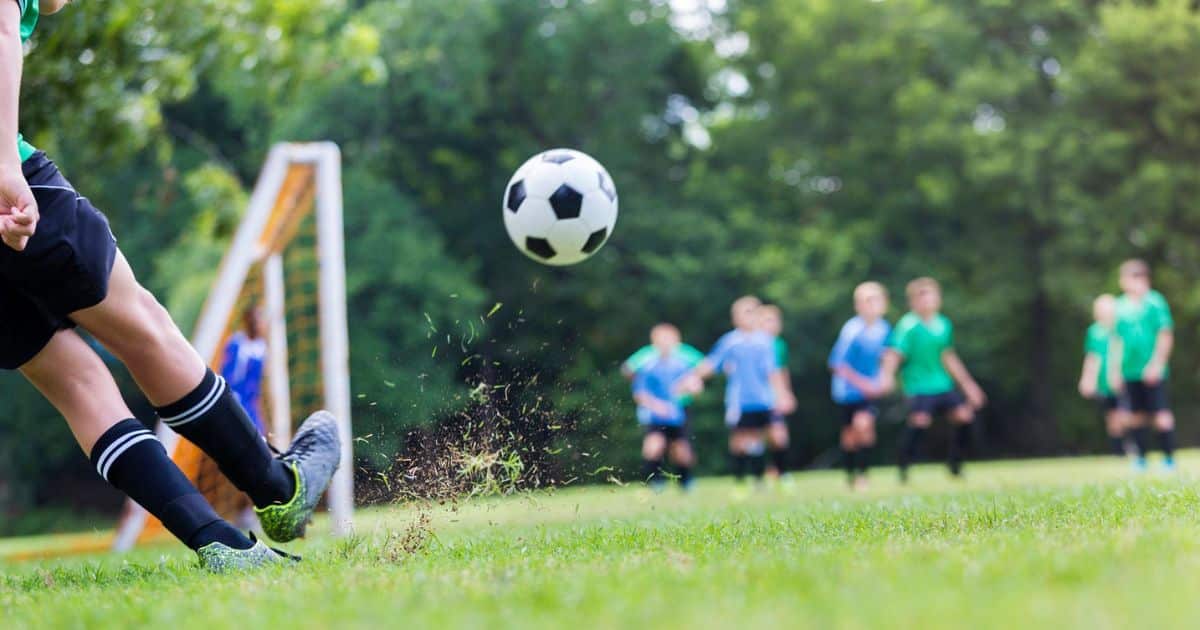Soccer’s essence lies in the fluid dance of feet orchestrating kicks that propel the ball with finesse and power. Every strategic play and every artful touch paints a canvas of athletic brilliance on the field. In the realm of soccer, the harmonious collaboration of skillful kicks defines the heartbeat of the beautiful game.
At the core of soccer’s excitement is the question that reverberates through the field How Fast Can A Soccer Ball Be Kicked? This inquiry propels us into a thrilling exploration of the dynamic interplay between power and precision. Players wielding finely honed skills unleash shots that defy expectations propelling the ball with breathtaking speed. It’s not just about force it’s a delicate balance shaping the riveting narrative of soccer’s fast-paced intensity.
Discovering the speed of a kicked soccer ball is a fascinating journey. Players can achieve speeds up to 80 mph showcasing their athletic prowess. The velocity depends on factors like the player’s strength and the technique used. Powerful kicks not only awe spectators but also create more goal-scoring opportunities. The blend of precision and speed becomes the heartbeat of soccer’s thrilling spectacle.
What’s the Record for Fastest Kick?

At a mind-boggling speed of 131 mph the record for the fastest kick showcases the epitome of martial arts prowess. This achievement is a result of a harmonious blend of agility strength and impeccable technique. It stands as a beacon of inspiration motivating martial artists globally to aspire to new levels of skill and performance.
The record underscores the dynamic nature of combat sports where pushing the limits is a constant pursuit. The practitioner behind this record not only defies expectations but also sets a standard for the relentless dedication required in the quest for excellence. In the world of martial arts this record remains a symbol of what can be attained through sheer determination and mastery of one’s craft.
Professional Players’ Speeds
Professional players’ speeds are impressive. Whether it’s football basketball or any other sport these athletes showcase incredible agility and quickness. They dash across the field court or track leaving spectators in awe of their rapid movements. The ability to accelerate change direction swiftly and cover ground with remarkable speed is a defining feature of professional players in various sports.
In addition to pure speed professional players also demonstrate exceptional reaction times. Quick reflexes allow them to respond instantly to changing game situations. Whether it’s a split-second decision to make a pass dodge an opponent or score a goal the high-speed performances of professional players highlight the importance of both physical prowess and mental agility in the world of sports.
How to Kick the Ball Faster
To kick the ball faster in soccer focus on your technique and strength. Plant your non-kicking foot next to the ball and swing your kicking leg through with power. Aim to make contact with the center of the ball using the top part of your foot. Bend your knee and follow through with your kick to generate more speed. There is a build leg strength through exercises like squats and lunges to enhance your kicking power.
How fast can a soccer ball be kicked? The speed of a soccer ball can vary depending on the player’s skill and strength. Professional players can kick the ball at speeds exceeding 80 miles per hour (130 km/h). However, the average player might kick the ball between 50 to 70 miles per hour (80 to 113 km/h). Remember practicing regularly and improving your technique can help you increase your kicking speed over time.
Relax when you kick the ball

When kicking the ball it’s crucial to stay relaxed. Tension in your muscles can affect the accuracy and power of your kick. Begin by taking a deep breath to calm your nerves. Keep your body loose especially your kicking leg as you prepare to make contact with the ball.
As you swing your leg avoid unnecessary stiffness. Allow your foot to follow through naturally after striking the ball. A relaxed approach not only helps in generating more power but also enhances your overall technique. So take it easy stay calm and let your body flow smoothly for a more effective and controlled kick.
The last stride should be the largest
Make your kicks more powerful by making the last stride you’re longest. As you approach the ball take a big step with your non-kicking foot. This elongated stride adds extra momentum to your kick. The increased distance covered in the last step helps generate more power when you connect with the ball.
Focus on timing and coordination to ensure the extended stride doesn’t compromise your balance. Practice this technique consistently to make it a natural part of your kicking motion. Remember, the last stride being the largest contributes to a stronger and more impactful kick.
Ensure follow-through
- Position Yourself: Stand beside the ball with your non-kicking foot close ready to strike.
- Deep Breath: Inhale deeply calming nerves and focusing your mind.
- Wind Up: Swing your kicking leg backward like pulling back a spring for power.
- Large Stride: Take a big step with your non-kicking foot creating momentum.
- Lace Contact: Strike the ball with the laces of your shoe aiming for accuracy.
- Relax Muscles: Keep your body and kicking leg relaxed avoiding unnecessary tension.
- Full Extension: Follow through by extending your kicking leg fully after contact.
- Practice Regularly: Consistent practice helps refine technique and muscle memory.
- Build Leg Strength: Strengthen your legs with exercises like squats for more kicking power.
- Balance: Focus on timing and coordination to stay balanced throughout the kick.
Should Players Focus on Kicking the Ball Faster?

In the game of soccer, the ability to execute a swift and powerful kick holds significant importance for players. A faster kick can serve as a game-changer catching opponents off guard and creating valuable scoring opportunities. To develop this crucial skill players should focus on consistent practice and refining their kicking technique. Strengthening leg muscles honing the striking motion and improving coordination contribute to achieving a quicker and more accurate kick.
While emphasizing the need for a faster kick it’s paramount for players to strike a balance between speed and control. Merely focusing on speed without ensuring accuracy can lead to turnovers and missed chances. Coaches often stress the importance of precision in tandem with speed during training sessions. This approach helps players become more well-rounded athletes capable of making decisive and effective plays on the field.
In the pursuit of a powerful kick players must recognize that speed alone is not the sole determinant of success. A well-rounded player also values accuracy and control in their kicks. By dedicating efforts to both aspects players can elevate their overall performance becoming versatile assets for their teams and contributing significantly to the dynamics of the game.
Pros of kicking the ball faster
Swift kicks in soccer provide a tactical edge by surprising opponents and creating scoring opportunities. The ability to reduce defensive reaction time and execute rapid counterattacks adds dynamism to a team’s gameplay making them harder to predict. In essence, mastering faster kicks contributes to a team’s strategic versatility and offensive prowess.
Cons of kicking the ball faster
While kicking the ball faster in soccer has its advantages there are potential drawbacks to consider. Increased speed may compromise accuracy leading to misplaced passes and shots. There is a focus on rapid kicks could result in a loss of ball control contributing to turnovers and missed opportunities. Over time, a team relying too heavily on fast kicks may become predictable allowing opponents to strategize and defend more effectively.
FAQ’s
How fast does football travel when kicked?
A football can travel at speeds ranging from 50 to 80 miles per hour when kicked, depending on factors such as the player’s strength, technique, and the part of the foot used.
What is the flight of a kicked football?
A kicked football follows a dynamic, parabolic trajectory influenced by factors like force, angle, and spin. Its flight can curve, rise, and fall as it moves through the air.
What are illegal moves in football?
Illegal moves in football encompass actions like handball, fouls (tripping, pushing), offside positioning, dangerous play, and dissent, leading to penalties or free kicks.
Final Thoughts
How Fast Can A Soccer Ball Be Kicked? The speed of a soccer ball is a dynamic interplay of skill and technique. Professional players masters of their craft can unleash kicks that exceed 80 miles per hour a testament to their refined abilities. In contrast, recreational players may experience more modest speeds reflecting their varying skill levels and training intensity. Understanding the nuances of kicking speed is pivotal for player development. Techniques such as precise foot placement adept body positioning and a strong follow-through significantly contribute to the force behind a kick. The incorporation of strength training and conditioning amplifies a player’s ability to generate power offering a pathway to improved performance.






